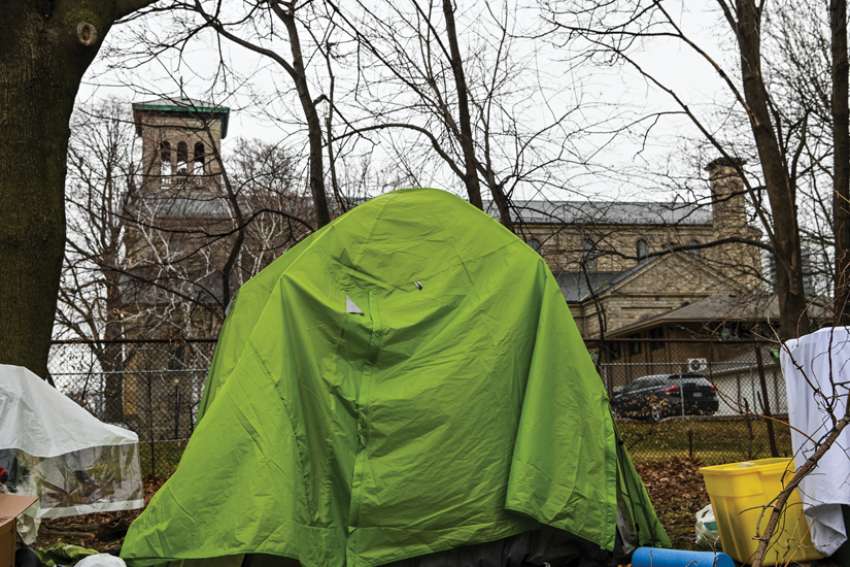“Since the start of the pandemic, there has been a noticeable increase in the number and size of encampments,” the City of Toronto conceded in its “Encampment Outreach & Response” page on its website.
Couch surfing options have been limited by friends and family fearful of having too many people in the home. Detox and mental health facilities have either shut down completely or strictly limited their intake. The provincial jails reduced their populations by 29 per cent. Many of those sent home from jail, detox or hospital didn’t have a home to go to.
Early in June, Toronto City Council passed a motion adopting a zero encampments goal, paired with a second motion committing the city to ending chronic homelessness.
At The Good Shepherd east of downtown on Queen Street, homeless men and women living in encampments are regular guests.
“Our meal program is open to anyone,” notes assistant executive director Aklilu Wendaferew. “We know there are people who live in encampments who come here for a meal.”
Wendaferew believes the city needs to be ready for a big and possibly long-term increase in the homeless population, including those living on the street and camping in the parks.
“There will be structural unemployment because of COVID,” Wendaferew told The Catholic Register.
The Catholic social worker isn’t discounting the idea that the economy may bounce back. The Good Shepherd has been around long enough to see boom times and big homeless populations co-existing. When people at the bottom end of the employment market, struggling with debt, lose their jobs they often lose their homes. Being homeless rarely improves a person’s job prospects, mental health or physical health.
“A lot of people are close to being homeless,” said Wendaferew. “We will see a rise in homelessness in the next little while, as far as I see it. There will be a significant portion of our homeless population, even if the economy bounces back, that will be left behind.”
The Good Shepherd currently operates 50 beds at its Queen Street facility and another 47 beds in a city-leased hotel on Jarvis Street. All the beds are full. It’s estimated there are about 6,000 people out on the street with no shelter of any kind on any given night in Toronto.
Toronto is relying on promised but not yet delivered federal and provincial funding to help execute a 24-month housing and homelessness recovery plan that aims to wrap up at the end of 2022. The city is currently using $47 million in funding from the Shelter, Support and Housing Administration’s capital budget, plus approximately $3.5 million in Open Door incentives to support these housing efforts. The plan would add 2,460 permanent new units, including 1,460 supportive housing units and rent subsidies for up to 1,000 people.
“You have to really deal with the basic issue that is pushing people onto the street, into encampments,” said Wedaferew. “Deal with that and try to understand why they’re there. It’s about poverty, about housing and about support.”
While mental health and addiction are certainly present in the city’s most vulnerable homeless population, it’s a mistake to attribute all homelessness to out-of-control drug and alcohol use.
“I wouldn’t say everyone who is out there has a drug problem and they don’t want to deal with that issue. I don’t think so,” Wendaferew said. “Encampments are first and foremost about poverty. It’s about people not having appropriate amounts of money to rent a place. It’s about the lack of housing — particularly the lack of safe, affordable housing.”
The Good Shepherd runs a successful and respected drug and alcohol recovery program at its Queen Street East facility, but it serves a minority of the clientele. The majority are living in situations where they either can’t cook a meal or lack the money to buy groceries.
While COVID has been a serious challenge for The Good Shepherd, the situation has stabilized. Over 80 per cent of the regulars are vaccinated. But Wendaferew’s COVID concerns extend into next year and beyond.
“This has to really alarm us. We have to understand that with COVID there is a serious economic downturn and there is a significant number of people who will be in poverty, who will be unemployed permanently,” he said. “We have to prepare. Some of them will end up homeless. We have to really prepare for that as a society.”


